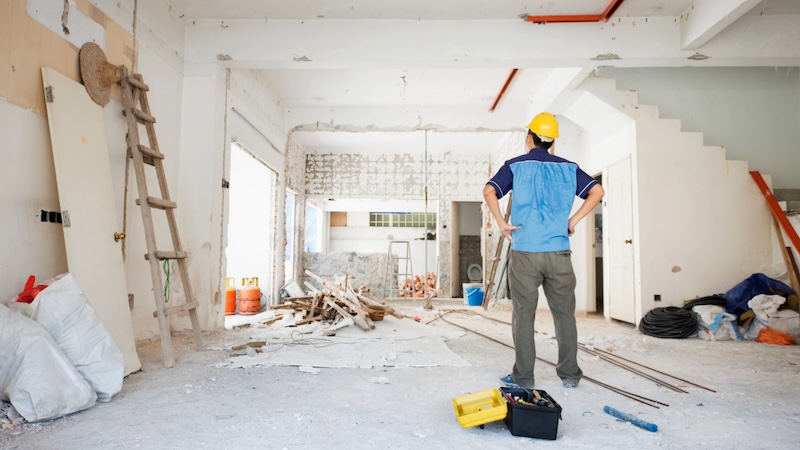Renovating your home is an exciting way to increase its value, improve functionality, or make it feel like new again. However, renovations can come with a hefty price tag, leaving many homeowners wondering how to finance them.
If you’re an existing homeowner, you have several options for funding your renovation project, including refinancing your mortgage, leveraging a Home Equity Line of Credit (HELOC), or exploring other financial solutions. In this blog, we’ll dive into each option, outlining how they work and the benefits they offer, so you can choose the right fit for your needs.
Option 1: Refinancing Your Mortgage for Renovations
Refinancing involves replacing your current mortgage with a new one, allowing you to access a portion of your home’s equity to fund your renovations.
How Does It Work?
When you refinance, your lender reassesses the value of your home and your remaining mortgage balance. You can borrow up to 80% of your home’s appraised value (minus the outstanding mortgage balance). The difference is available as cash to use for your renovations.
Benefits of Refinancing for Renovations
- Access to Large Funds: Refinancing provides access to a significant amount of money for major renovation projects.
- Lower Interest Rates: Mortgage interest rates are often lower than other types of loans or credit products.
- Streamlined Payments: You consolidate your renovation costs into your mortgage, simplifying repayment.
What to Consider
- Refinancing may extend your mortgage term or result in penalties for breaking your current mortgage, depending on the timing.
- Work with a mortgage broker to calculate whether refinancing makes sense for your renovation plans.
Option 2: Home Equity Line of Credit (HELOC)
A HELOC is a revolving line of credit secured against your home’s equity, allowing you to borrow as needed and pay interest only on the amount used.
How Does It Work?
With a HELOC, you can access up to 65% of your home’s appraised value, minus the remaining mortgage balance. Unlike a lump sum, a HELOC lets you draw funds gradually, which is ideal for ongoing or phased renovations.
Benefits of a HELOC
- Flexibility: Borrow only what you need, when you need it.
- Lower Interest Rates: HELOCs typically have lower interest rates than unsecured loans or credit cards.
- Interest-Only Payments: You can make interest-only payments during the draw period, easing your financial burden.
What to Consider
- HELOCs come with variable interest rates, meaning your payments may fluctuate.
- You’ll need to have substantial equity built up in your home to qualify.
- Overborrowing can lead to financial strain, so it’s important to use a HELOC responsibly.
Option 3: Second Mortgage
If refinancing or a HELOC isn’t an option, a second mortgage may be a viable alternative. This is a separate loan secured against your home, in addition to your existing mortgage.
How Does It Work?
A second mortgage allows you to borrow a lump sum based on your home’s equity. Unlike refinancing, it doesn’t replace your existing mortgage but is an additional loan with its own terms and payments.
Benefits of a Second Mortgage
- Quick Access to Funds: Ideal for homeowners who need cash quickly for renovations.
- No Need to Break Current Mortgage: If your current mortgage has a favourable rate, a second mortgage can help you avoid penalties.
What to Consider
- Interest rates for second mortgages are usually higher than those for primary mortgages or HELOCs.
- You’ll have two mortgage payments to manage, which can increase financial pressure.
Additional Financing Options for Renovations
1. Personal Loans
If your renovation costs are relatively modest, a personal loan may be an option. While interest rates are typically higher than mortgage products, personal loans are unsecured and don’t require tapping into your home’s equity.
2. Government Programs and Incentives
Look into programs like the Canada Greener Homes Initiative, which offers grants and loans for energy-efficient home upgrades. These programs can help offset costs if your renovations qualify.
3. Credit Cards
For small, manageable expenses, a credit card with a low-interest introductory period or rewards can be a convenient solution. However, avoid relying on credit cards for significant renovation costs due to high-interest rates.
How to Choose the Right Financing Option
Choosing the best way to fund your renovations depends on:
- Your Financial Situation: Assess your income, credit score, and overall debt levels.
- The Scope of Your Renovations: Large-scale renovations may require refinancing or a HELOC, while smaller projects might be covered with a personal loan.
- Your Home Equity: The amount of equity you’ve built in your home will determine whether options like a HELOC or second mortgage are available to you.
Working with a mortgage broker can simplify this decision. They can evaluate your unique situation, explain your options, and guide you toward the most cost-effective choice.
FAQs About Renovation Financing
Is refinancing the best option for large-scale renovations?
Refinancing is often the best option for significant renovations, as it allows you to access a large amount of money at lower interest rates compared to unsecured loans or credit cards.
Can I combine a HELOC with my existing mortgage?
Yes, some lenders allow homeowners to set up a HELOC alongside their existing mortgage, provided there is sufficient equity in the home and they offer a HELOC product.
Are there any tax benefits for home renovations?
Some energy-efficient renovations may qualify for federal or provincial tax credits or rebates. Research programs in your area or consult a professional for details.
Let’s Find the Right Renovation Financing Together
If you’re ready to take the next step toward creating your dream home, I’d love to help you explore your financing options. As an experienced mortgage broker, I can guide you through the process of refinancing, securing a HELOC, or finding the best loan for your needs.
Let’s make your renovation plans a reality—reach out to me today, and I’ll always respond back!


